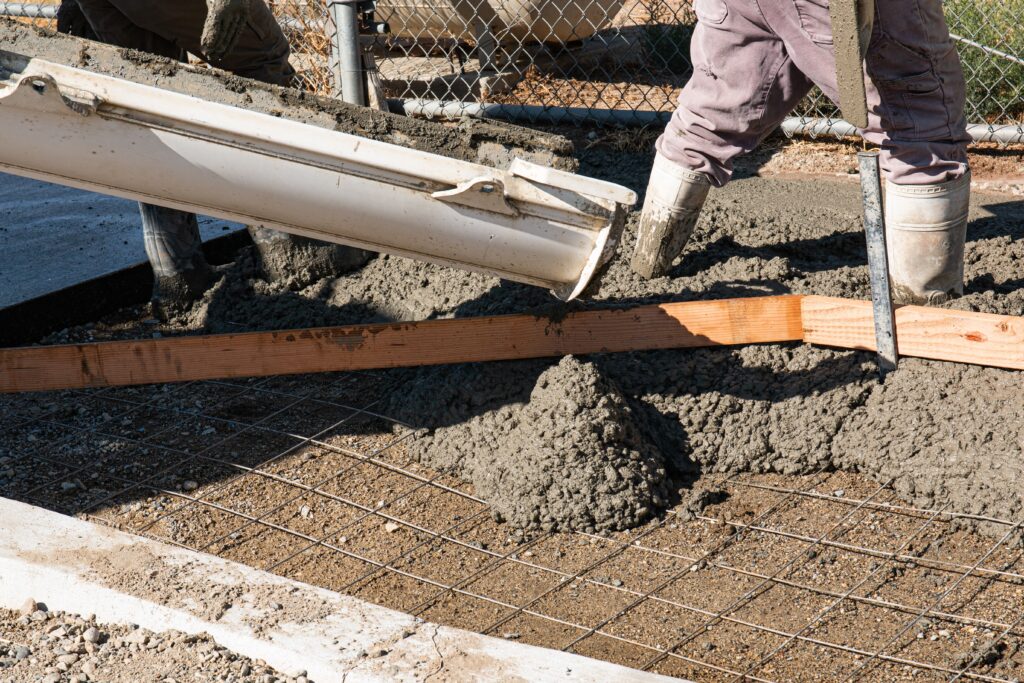
Spring is a crucial season for asphalt maintenance in Denver, as pavement surfaces often reveal the cumulative impact of winter’s freeze-thaw cycles, heavy snow, and deicing chemicals. Cracks, potholes, and water infiltration compromise both durability and safety, posing risks to employees, customers, and delivery vehicles. Early spring inspections enable businesses to identify signs you shouldn’t ignore and address minor damage before it escalates into costly repairs or structural failures.
Research from the Federal Highway Administration (FHWA) shows that for flexible pavements in service for 15 years under normal traffic, 36% of total damage is attributable to environmental factors (including freeze-thaw cycles). In this blog, we will discuss why scheduling inspections early is critical, what damages to watch for, and how timely maintenance can protect your business infrastructure and budget.
How Denver’s Freeze-Thaw Cycles Damage Asphalt Surfaces
Denver’s winters are particularly challenging for asphalt pavements. Snow, ice, and road salts infiltrate cracks and expand as temperatures drop below freezing. This cycle, known as freeze-thaw, weakens the asphalt structure and accelerates surface failures, making pavements more susceptible to deterioration in the early spring.
Freeze-thaw damage is a major concern for businesses because it often goes unnoticed until severe cracking or potholes appear. Recognizing these effects early allows property owners to take corrective actions before extensive damage occurs.
Key freeze-thaw effects on asphalt
These effects make early detection and preventive action essential to protect asphalt integrity and extend pavement lifespan.
- Cracking along surface joints and edges.
- Formation of potholes in areas with water infiltration.
- Reduced structural integrity under repeated heavy loads.
- Accelerated aging of the asphalt binder, leading to brittleness.
How can freeze-thaw damage be minimized?
Freeze-thaw damage can be minimized by applying a sealcoat before winter, promptly sealing cracks, and using permeable asphalt in low areas to improve drainage. These measures help extend pavement life and reduce costly repairs.
Early attention to freeze-thaw impacts ensures that pavements remain durable and safe while extending their lifespan.
Traffic and Load Stress on Commercial Asphalt Surfaces
Commercial asphalt in Denver experiences high daily traffic, from delivery trucks and company vehicles to customer parking. Heavy vehicles exert tremendous pressure on pavement surfaces, leading to rutting, surface fatigue, and structural weakening over time. Without regular inspections, these stress points can worsen unnoticed, resulting in significant maintenance costs.
Research shows that an overloaded commercial vehicle class can cause maintenance and rehabilitation costs to increase by as much as 100% compared to legally-loaded vehicles on the same pavement structure.
Climate factors such as precipitation, freeze-thaw cycles, and temperature fluctuations also accelerate pavement deterioration. For example, areas with frequent snowfall or extreme temperature swings are more prone to cracking and surface deformation. Early identification and reinforcement of stress points allow businesses to prevent large-scale failures, maintain operational efficiency, and extend pavement life.
Traffic-Induced Stress Indicators
Recognizing these stress indicators early can save significant time and repair costs:
- Rutting along vehicle wheel paths, especially in loading zones
- Cracks, surface deformation, and depressions that grow over time
- Loose aggregate or delaminating asphalt layers, which indicate structural weakening
- Premature wear on heavily used areas, such as delivery or service zones
Preventive Strategies
To minimize pavement damage and reduce repair costs, businesses should adopt proactive measures:
- Use reinforced asphalt mixtures or thicker pavement layers in high-load areas
- Implement load management policies to avoid overloading vehicles
- Apply sealcoating and crack sealing at the first signs of wear to prevent moisture infiltration
- Schedule inspections after extreme weather events and at least twice annually, ideally in spring and fall
How Often Should High-Traffic Asphalt Areas Be Inspected?
Regular inspections help identify weak points before they escalate into major repairs. High-traffic asphalt areas should be inspected at least twice a year, with additional checks after heavy rainfall, snowstorms, or noticeable surface changes. Using a documented inspection routine helps track pavement health, plan maintenance budgets, and prioritize high-risk areas.
Addressing traffic and load stress early not only prevents expensive repairs but also enhances safety, ensures smoother operations, and prolongs the lifespan of commercial asphalt surfaces.
Common Spring Asphalt Issues Impacting Denver Commercial Properties
Spring brings unique challenges for asphalt surfaces. Melting snow and accumulated debris from winter can exacerbate existing cracks and create new ones. Water infiltration during this season often leads to potholes, edge cracking, and weakened pavement joints. Businesses that neglect early spring inspections may face sudden, costly repairs or operational interruptions.
Proactively identifying vulnerabilities at the start of the season helps prevent minor problems from escalating.
Common spring damage patterns
Identifying these typical spring-related issues early helps prevent further deterioration and costly repairs.
- Potholes formed due to water infiltration and freeze-thaw cycles.
- Edge cracking along sidewalks, parking areas, or road shoulders.
- Loose or uneven asphalt surfaces create tripping hazards.
- Blocked drainage systems are causing localized flooding.
What are the most common spring asphalt problems for businesses?
The most common spring asphalt problems for businesses include water-related potholes and edge cracking, surface heaving caused by frost-thaw cycles, and blocked drains that lead to standing water and erosion.
Timely detection and repair of spring-specific damage ensures pavement longevity, reduces repair costs, and improves safety for employees and customers alike.
Advanced Pavement Maintenance Techniques for Denver Businesses
Once early spring inspections identify vulnerable areas, businesses can implement advanced maintenance techniques to extend asphalt lifespan. Modern pavement repair methods focus on minimizing disruption, reducing costs, and addressing underlying structural issues. Techniques include crack sealing, overlaying, and full-depth reclamation, each tailored to the severity of pavement damage.
Key maintenance strategies
Implementing these preventive measures ensures long-term asphalt durability and reduces costly repairs.
- Crack sealing: Prevents water infiltration and limits crack propagation.
- Overlaying: Adds a new asphalt layer to reinforce weakened surfaces.
- Full-depth reclamation: Recycles old pavement and addresses deep structural damage.
- Preventive inspections: Ensure minor issues are fixed before they escalate.
Which maintenance method is best for different types of asphalt damage?
Crack sealing is ideal for minor surface fissures, overlaying works well for moderate wear and rutting, and full-depth reclamation is recommended for areas with deep structural failure. Selecting the correct method depends on inspection results and traffic load patterns.
Choosing the right maintenance strategy ensures long-lasting asphalt performance while maximizing return on investment.
Why Is Drainage Management Crucial for Asphalt Longevity
Proper drainage is crucial in Denver, where spring melt and seasonal rainfall can introduce excess water to asphalt surfaces. Water infiltration accelerates pothole formation and weakens the asphalt base, reducing pavement life. Managing runoff with proper grading, drainage channels, and permeable surfaces is essential for long-term pavement health.
Implementing these solutions during spring ensures that asphalt surfaces are protected before the onset of summer heat and traffic loads.
Drainage improvement measures
Effective drainage management prevents water accumulation, protecting asphalt surfaces from premature damage and extending pavement life.
- Installing sloped surfaces and grading to channel water away.
- Cleaning and maintaining storm drains to prevent blockages.
- Using permeable asphalt or pavers in high-risk areas.
- Incorporating retention basins or curb cuts for water diversion.
How does poor drainage affect asphalt performance?
Poor drainage allows water to infiltrate cracks, leading to potholes and structural weakening. Standing water accelerates binder aging and increases the likelihood of rutting, reducing the overall lifespan of asphalt surfaces.
Proper drainage management not only protects asphalt but also minimizes repair costs and enhances safety for pedestrians and vehicles.
Seasonal Pavement Safety Considerations for Businesses
Spring inspections also allow businesses to address safety concerns. Uneven surfaces, potholes, and loose asphalt can create hazards for employees, customers, and delivery trucks. Proactively repairing these issues reduces liability risks and maintains compliance with safety regulations.
Regular spring inspections and repairs mitigate these risks and support a safer environment for all stakeholders.
Safety-focused maintenance tips
Prioritizing safety during asphalt maintenance not only protects employees and customers but also ensures long-term durability and compliance with regulations.
- Mark temporary hazards with cones or signage.
- Fill potholes and seal cracks promptly.
- Ensure walkways and parking areas are level and free of loose debris.
- Conduct periodic safety audits after winter to identify emerging issues.
What safety risks are associated with neglected spring asphalt maintenance?
Neglected asphalt can result in slips, trips, or vehicle damage. Water infiltration may create slippery surfaces, potholes can damage vehicles, and uneven pavements increase liability risks for property owners. Proactive inspections prevent accidents and maintain a professional environment.
Addressing safety during spring inspections ensures a secure and well-maintained property, protecting employees, customers, and business assets.
How to Plan for Long-Term Asphalt Pavement Sustainability
Beyond immediate repairs, businesses should develop a long-term pavement management plan. This includes scheduled inspections, maintenance forecasting, and budgeting for repairs over multiple years. Long-term planning ensures that asphalt surfaces remain functional, safe, and cost-effective.
Key components of long-term planning
Incorporating these elements into your pavement strategy ensures durable, cost-effective, and sustainable asphalt management for years to come.
- Multi-year inspection schedules based on traffic and climate.
- Budget allocation for routine maintenance and unexpected repairs.
- Use of high-quality materials for repairs and overlays.
- Integration of sustainability practices, like recycled asphalt or warm-mix asphalt.
How does long-term pavement planning benefit businesses financially?
Long-term planning reduces emergency repair costs, minimizes operational disruption, and allows businesses to spread maintenance expenses over time. By preventing severe damage, companies save money and enhance property value while supporting sustainable practices.
Why Denver Businesses Should Partner with Expert Asphalt Contractors
Choosing the right contractor is critical to ensuring that spring inspections lead to effective repairs and long-lasting pavement. Certified asphalt contractors bring technical expertise, specialized equipment, and knowledge of local climate challenges, enabling timely interventions that prevent further deterioration.
Partnering with experienced professionals ensures compliance with local regulations and maximizes the benefits of early inspection programs.
Benefits of professional contractor partnerships
Collaborating with experienced asphalt contractors ensures quality, compliance, and long-term performance while minimizing risks and unexpected costs.
- Verified use of high-quality, sustainable asphalt materials.
- Access to advanced repair techniques and equipment.
- Compliance with Denver’s environmental and construction codes.
- Long-term warranties that provide assurance and accountability.
Why is hiring certified contractors important for spring asphalt maintenance?
Certified contractors have the expertise to correctly assess damage, choose appropriate repair methods, and implement solutions that extend pavement life. Their knowledge of local climate conditions ensures that repairs withstand freeze-thaw cycles and heavy traffic, ultimately saving businesses money and reducing liability risks.
Partnering with the right contractor guarantees that early spring inspections translate into long-term pavement performance and safety.
Analyzing the Cost Savings of Timely Spring Pavement Inspections
Investing in early spring inspections provides measurable financial advantages. Preventive maintenance costs a fraction of full-scale repairs and reduces operational downtime caused by sudden pavement failures. Early detection also allows for better budget planning and avoids emergency expenditures.
A study on Colorado Department of Transportation (CDOT) projects analyzing Full-Depth Reclamation (FDR) and overlay rehabilitation showed that FDR pavements have significantly lower life-cycle costs than overlay pavements. Specifically, the life-cycle cost of FDR pavements is approximately $178,243 per lane-mile, less expensive than overlays, resulting in a potential cost saving of about 30%. By identifying small cracks and water damage early, companies protect their infrastructure while optimizing cash flow.
Financial advantages include
Early inspections and proactive maintenance not only preserve pavement integrity but also translate into significant cost savings over time.
- Lower repair costs due to early detection of minor damage.
- Reduced liability and potential insurance claims.
- Minimized business disruption from unexpected road failures.
- Enhanced property value through well-maintained infrastructure.
How much can businesses save with early asphalt inspections?
Early inspections prevent small cracks from becoming major issues, reducing repair costs significantly. On average, businesses can save 20–30% in maintenance expenses and avoid costly emergency repairs, while also minimizing operational downtime and potential liability claims.
Evaluating the financial impact reinforces why timely inspections are a wise investment for Denver businesses.
Maximizing Asphalt Performance Through Strategic Maintenance Programs
A pavement management program integrates spring inspections, ongoing maintenance, and long-term planning into a cohesive strategy. This approach ensures that all aspects of asphalt health, from structural integrity to surface safety, are monitored and maintained systematically.
By combining inspections, preventive maintenance, and data-driven planning, businesses maximize pavement lifespan while minimizing environmental and financial impacts.
Core components of a pavement management program
A well-structured pavement management program relies on several key elements to ensure long-term asphalt performance and cost efficiency.
- Annual or bi-annual inspections are scheduled around seasonal changes.
- Data tracking for crack growth, pothole formation, and traffic stress points.
- Planned maintenance cycles, including crack sealing and resurfacing.
- Budgeting and resource allocation for preventive repairs and material upgrades.
What is a pavement management program, and why is it important?
A pavement management program is a structured approach to monitoring, maintaining, and repairing asphalt surfaces. It ensures that small issues are addressed promptly, extends pavement life, reduces repair costs, and improves safety for employees and customers.
Integrating a formal management program ensures that spring inspections are part of an ongoing strategy for optimal pavement performance.
Protect Your Business with Early Spring Asphalt Inspections
Early spring asphalt inspections are more than routine maintenance; they are a strategic investment for Denver businesses. By identifying damage caused by freeze-thaw cycles, heavy traffic, and seasonal stressors, inspections prevent costly repairs, enhance safety, and extend pavement life. Proactive maintenance, proper drainage, professional contractor partnerships, and a structured pavement management program all work together to protect your property and reduce long-term expenses.
Take action today: Schedule your spring asphalt inspection with our expert team to safeguard your business infrastructure, prevent costly repairs, and maintain a safe environment for employees and customers. Visit Asphalt Coatings Company now to book an inspection and access our comprehensive pavement solutions.
Frequently Asked Questions
How often should asphalt surfaces be inspected in Denver?
Asphalt should be inspected at least twice a year, in spring and fall, and after severe weather events. Regular inspections help detect minor damage early, preventing costly repairs and ensuring safe, durable surfaces.
What are the common spring asphalt issues in Denver?
Spring exposes asphalt to potholes, edge cracking, frost-heave damage, and blocked drains from melting snow. Early detection through inspections prevents further deterioration and reduces repair expenses.
How does Denver’s freeze-thaw cycle affect asphalt?
Freeze-thaw cycles cause water to expand in cracks, weakening the pavement and leading to potholes and surface damage. Timely inspections and maintenance can minimize long-term damage and extend asphalt life.
Why is proper drainage essential for asphalt longevity?
Effective drainage prevents standing water that erodes pavement and accelerates pothole formation. Proper water management helps preserve structural integrity and protects businesses from disruptions.
What are the benefits of partnering with professional asphalt contractors?
Professional contractors provide accurate assessments, preventive maintenance, and quality repairs. Their expertise reduces long-term costs, ensures compliance with local standards, and supports sustainable, durable pavement.



